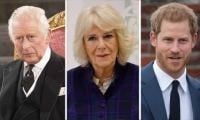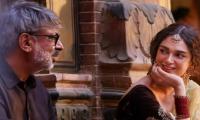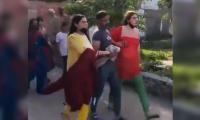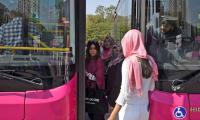Beirut was rocked by a port explosion on August 4 that killed 154 people, injured 5,000, destroyed a swathe of the Mediterranean city and sent seismic shockwaves around the region. There are speculations regarding the perpetrators of the bloody detonation, which has taken a massive toll of lives. This article is not about “whodunnit” or the conspiracy theories emerging; nor about the “day of judgment” protest rallies for Lebanon’s leaders to take responsibility for the deadly blasts.
The rising plume of smoke from the fire was reminiscent of the traumatizing nuclear mushroom clouds of Hiroshima and Nagasaki. In the aftermath, the glimpses of the devastated high-rise buildings triggered old memories of my first visit to Beirut. I was posted as Naval and Air Attaché to the Pakistan Embassy in Riyadh (1991-1995) and the first respite I got after the Gulf War, my family and I decided to tour the Middle East by road. War battered Iraq was out of the question but we drove to Jordan, Syria, Lebanon and Turkey.
We visited Madáin Saleh, the ancient archaeological site with the remains of the 1st Century AD Nabatean Kingdom located in the area of al-Ula in Saudi Arabia and their capital pink city of Petra in Jordan. Known as al-Hijr, the magnificent buildings and façades carved out of rosy sandstone cliffs are a marvel of human engineering in those ancient times. In Jordan, besides Petra, we visited Jarash, which had flourished in the eight century Greco-Roman periods. The fabled cave of the Ashab-e-Kahf located in the suburb of Abu Alanda in Amman was a pleasant surprise. In Syria we visited various tombs, Hazrat Bilal (Radi-Allahu anhu), a galaxy of companions of the Holy Prophet (pbuh), shrines of Bibi Zainab (Radi-Allahu anhu) and Sayyidah Ruqayyah (Radi-Allahu anhu), Homs, the final resting place of Hazrat Khalid bin Waleed (Radi-Allahu anhu) and Aleppo.
Lebanon jolted us; Beirut, once the favoured destination for tourism was devastated beyond imagination. Once splendid villas, towering buildings pock-marked by bullets, dilapidated walls and shattered windows gave the impression of a war zone. Having visited the ancient ruins of the Greco-Roman era, the Nabateans and Neolithic settlement of Palmyra, we were not mentally prepared for the shock of seeing a modern city scarred so horribly by civil war. The war-ravaged people were looking at us curiously from their hideouts; perhaps they had nowhere else to take shelter. My children were stunned to see the modern city in a state of devastation. Their earlier exposure was of ancient civilizations, while in Petra and Jarash we were imagining a once glorious age of pomp and splendor, which had now become wrecked at the hands of time.
The children played in the ruins imagining chariots racing and gladiators sparring in amphitheaters. Suddenly we were in the midst of a contemporary era — the ruins of a metropolis annihilated by man-made disasters of war and conflict. We were dumbstruck because the decay and devastation of the historical sites had occurred over centuries but now we had no words of explanation to my children of what mankind is capable of in the modern era. That trauma remains imprinted on our minds.
The initial shock and awe lessened as we drove beyond the ruins of the Muslim quarters, where we saw a different scene altogether. It was summertime and the beaches were full, the restaurants, which offer delicious Lebanese cuisine were crowded and the shopping areas were thronged by well-dressed people. As we drove through the countryside of Lebanon, roadside vendors offered fresh fruit of a wide variety.
That was 1992 but Beirut bounced back in grand style. In Travel + Leisure magazine’s World Best Awards 2006, it was ranked the 9th best city in the world. That list was voted upon shortly before the 2006 Lebanon War broke out, but in 2008 The Guardian listed Beirut as one of its top ten cities in the world. The New York Times ranked it at number one on its “44 places to go” list of 2009. Beirut was chosen in 2012 by Condé Nast Traveler as the best city in the Middle East, beating Tel Aviv and Dubai.
Beirut owes its resilience to its people. The August 4th blast is considered one of the deadliest in its history; even more devastating than the one that took the life of Rafiq Hariri. Yet, the redeeming feature is that students and youth of Lebanon were soon out in the streets clearing the debris and rubble. Naysayers are predicting that Lebanon is imploding and dying a slow but painful death, sans electricity, a shattered economy and fierce infighting but this scribe is certain, it will return to its old splendour because of the spirit of its people.
On our return journey, I recall that one night in Damascus as I sat in the balcony of the high rise apartment of the Pakistani Defence Attaché, my family and I were marveling at the beauty and lights of Damascus, which is one of the longest living capitals of the world. Today I dread going back to Damascus, Palmyra, Homs or Aleppo after the destruction caused by Daesh and the civil war. My heart goes out to the Syrians and Lebanese, who have suffered so much devastation caused by humankind. The Beirut blast rekindled the old scars in my memory but I hope and pray that the people will rebuild their homeland soon and bring it back to its old glory.
In an interview with a private TV channel on Friday, the senator said, “Making independent members senators is a...
All the lawyers requested that the court seek decisions from the AG regarding the release of these 20 individuals
Rehman emphasized that restoration and adherence to Constitution would encompass democracy within political parties,...
Court after hearing the matter for more than three hours, telecasted live, sought replies from the federal government...
Khyber Pakhtunkhwa Chief Minister Ali Amin Gandapur. —Radio PakistanISLAMABAD. All the witnesses have been...
Former prime minister, MNA Raja Pervez Ashraf speaking on the occasion of World Press Freedom Day at the National...







